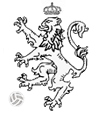
Document | arfsh.com
A document created by arfsh.com for the whole football community
Copa América 1925
Author: Isaque Argolo | Creation Date: 2023-06-29 21:52:50
Data providers: Isaque Argolo.
Archive(s): .
A new edition started. This was the edition with fewer participating countries. The first match of the South American championship started on 29/11/1925 and lasted almost a month of the tournament. In this mold, with only three selections, the teams would face each other twice in the tournament; totaling four matches for each team. In the previous edition, Argentina and Paraguay had participated in the tournament, but Brazil did not send any team. Chile decided not to participate due to poor previous performances and Uruguay due to conflicts within the Association. With only three teams disputing the tournament in two rounds each, as much as Argentina was considered slightly superior to Brazil, the tournament was more disputed between the two teams. In an almost unanimous opinion, Paraguay, of the half-back Fleitas Solich, would be the third force. According to several sources, Paraguay had sent to Buenos Aires their strongest selection so far for the tournament, and with some names already well known in South America.Argentina, in turn, had a well above average defense, with a very solid half-back line, led by veteran right half-back Médici; with a line of top-class full-backs in Bidoglio and Muttis. Argentina, moreover, still had Tesoriere who had held an exceptional tournament in 1924. Argentina's defensive system was the main aspect of the team, but the formidable attack had great names in Seoane and Tarascone. In addition to these two names, the skillful Sánchez, from the interior, was placed as a right inside forward in the team. The Argentine national team was heavily based, mainly the defensive system, on Boca Juniors, the club team that made an exceptional tour in Europe a few months earlier. On the side of the Brazilian team, Brazil did not have a regular team. Therefore, several changes throughout the tournament would be quite likely, even in relation to the forward line — which was its main weapon. The star of the national team, the centre-forward Friedenreich, was back to lead the attacks; conducting the plays, organizing the line and also scoring the goals. About the Brazilian forward line, Friedenreich commented: — The line comes in well; as it is, it's going to be a lot of work for the platinos. Filó and Neco play well with me and Nilo, who is a resourceful and very intelligent player, combines wonderfully, to the point of appearing to be my teammate on the left wing. Moderato is what we know. In fact! — I must say that I liked Néquinho's game a lot, he's a boy of the future. Defensively, there was nothing to expect from Brazil. Although the master Friedenreich defended the Brazilian defence by calling it "solid wall", the general opinion was that it was not solid at all. SUMMARY
| 29/11/1925 | Argentina | 2:0 | Paraguay |
| 06/12/1925 | Brazil | 5:2 | Paraguay |
| 13/12/1925 | Argentina | 4:1 | Brazil |
| 17/12/1925 | Brazil | 3:1 | Paraguay |
| 20/12/1925 | Argentina | 3:1 | Paraguay |
| 25/12/1925 | Argentina | 2:2 | Brazil |
1# ARGENTINA
2# BRAZIL
3# PARAGUAY
© arfsh.com & Isaque Argolo 2024. All Rights Reserved.